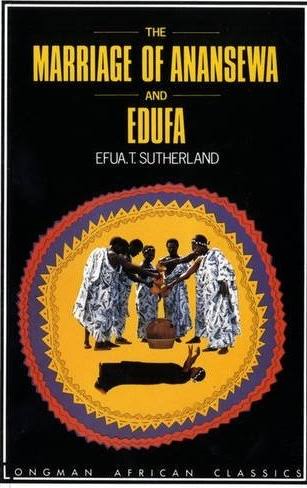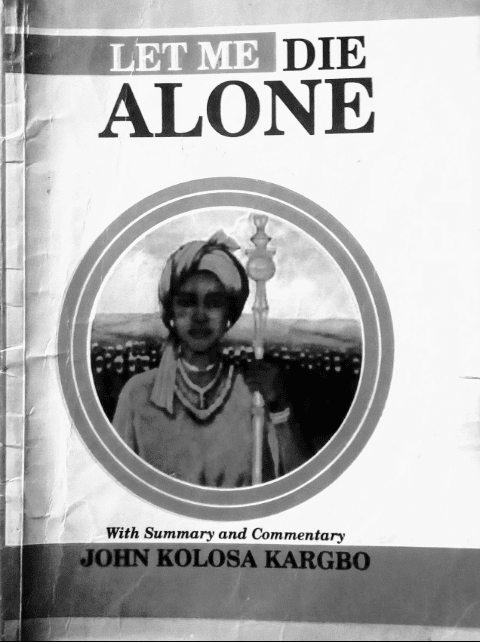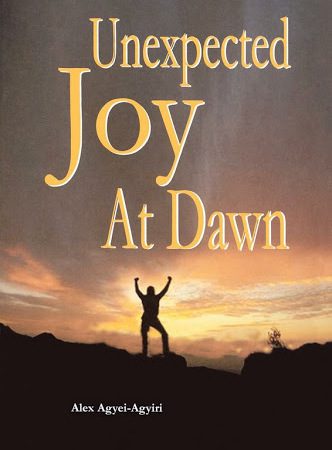What We Know about the Playwright
Ola Rotimi (1938–2000) was a Nigerian playwright, director, and academic. He was a versatile artist who wrote plays and essays, but he is particularly celebrated for his work in drama. He was one of Nigeria’s most celebrated playwrights and theatre directors. He was what one may call a “complete man of the theatre.” He wrote plays, acted them, directed them, and designed performance spaces. This is the depth of Rotimi’s involvement in the African drama.
Some of Ola Rotimi’s well-known plays include The Gods Are Not to Blame, a reinterpretation of the classic Greek tragedy “Oedipus Rex” with an African twist; Ovonramwen Nogbaisi, a historical play that focuses on the crises in the nineteenth-century Benin Kingdom; Our Husband Has Gone Mad Again, a political satire that situates the political corruption in Africa within a domestic context; and Kurunmi, another historical play that relates the nineteenth-century political upheavals in a weakened Oyo Empire.
Rotimi taught drama and literature at various universities, including the University of Ife (now Obafemi Awolowo University) in Nigeria, where he founded the Ori Olokun Theatre. Rotimi also served as the head of department at the University of Port Harcourt. He further shared his expertise as a visiting professor and director in Europe and the United States.
Ola Rotimi’s legacy lives on as his plays continue to be staged and studied around the world.
Kurunmi in History
Kurunmi was a skilled warrior and strategist who was born in the late 18th century. He rose to prominence in the town of Ijaiye within the Oyo Empire. His cunning and military prowess earned him the title of Aare Ona Kakanfo, the highest military commander in the Yoruba kingdom, a position Alaafin Atiba nominated him for. Kurunmi led Ijaiye through successful campaigns against external enemies.
He clashed with Ibadan, another rising power within the Oyo Empire. This rivalry culminated in the devastating Ibadan-Ijaiye War (1862–1864), which ultimately led to Ijaiye’s destruction and Kurunmi’s downfall.
Opinions on Kurunmi remain divided. Some see him as a courageous warrior who defended Ijaiye’s autonomy and his personal values, while others describe his leadership style as ruthless and autocratic.
He is often seen as a symbol of Yoruba power and independence, but also as a cautionary tale against the destructive nature of political conflict.
Artistic Representations of Kurunmi
Kurunmi has been extensively represented in works of art. He was particularly portrayed artistically in Ola Rotimi’s Kurunmi: An Historical Tragedy and Beautiful Nubia‘s Kurunmi is on the Way. While Ola Rotimi presents Kurunmi through the medium of theatre, Beautiful Nubia uses music to convey his interpretations of Kurunmi.
It is important to acknowledge that the two pieces of art take different approaches in their projections of Kurunmi. Kurunmi: An Historical Tragedy is a historical tragedy set in the 19th-century Yoruba kingdom that rehashes the downfall of Kurunmi and the events leading to his downfall. Therein, Ola Rotimi pictures Kurunmi as a die-hard traditionalist, whose only hubris is the very quality that makes him who he is. As we have noted elsewhere, Kurunmi “believes in the perpetuation of well-tested practices and frowns at any sudden departure from these tested paths.” It is this belief and resistance to change, not the power he wields or his short temper, that eventually lead to his downfall.
For Rotimi’s Kurunmi, “the pride of a man is in his tradition—something to learn from for the peace of his present; something to learn from for the advance of his tomorrow” (p. 16). This is how dear Kurunmi holds the traditional values of his people. This is why, when Alafin Atiba perverts an existing tradition, he easily becomes an enemy of Kurunmi.
This Kurunmi aptly describes the Alaafin and the chiefs who assent to Alaafin’s perversion of the tradition in these words:
A king, a ruler who sees truth but is too weak, too cowardly to hold the truth, the ruler has fallen low, lower than the most depraved slave in our bushland.
p. 18, Kurunmi: An Historical Tragedy
Regardless of his human errors, Rotimi’s Kurunmi accounts for his actions and inactions. He does not blame the misfortune of his people on anyone but himself. He says,
When a leader of men has led his people to disaster and what remains of his present life is but a shadow of his proud past, then it is time for the leader to be no more.
p. 18, Kurunmi: An Historical Tragedy
This position—the need for leaders to be accountable and man up to their actions—is, of course, in tandem with the messages Beautiful Nubia’s Kurunmi is on the Way is suffused with:
The true test of a leader is to lead right in front and be responsible when things go wrong. No be to dey run o and make excuse o.
Kurunmi is on the Way
Kurunmi is on the Way is a song from the album Irinajo, released in 2010. In the song, Beautiful Nubia portrays Kurunmi as a gallant, accountable, and charismatic leader who not only stood by his principles and went all out to fight for them but also led by example as he matched the strength of his words with his actions.
Kurunmi is on the Way uses history as a springboard for social commentary and activism. It criticises political leaders who lack action and integrity, contrasting them with the strong leadership represented by Kurunmi, who made sacrifices for the collective good. Beautiful Nubia’s Kurunmi was the lone voice of reason in a society that departed from one of its core traditions. He did not budge even in the face of an imminent defeat and the dire consequences of his actions, one of which is losing five sons in a single day.
Kurunmi lost five sons all in a day but he never wavered to the very last end.
Kurunmi is on the Way
Kurunmi is on the Way uses Kurunmi as a metaphor for the ideal leader Nigeria sorely needs. It criticises leaders who make empty promises but fail to take concrete action to address social issues. This is where Kurunmi stood out as he fitted the lyric, “Real man na for action, no be for mouth o.”
In summation, we all can agree that the artistic portrayals of Kurunmi in both Ola Rotimi’s play and Beautiful Nubia’s song scream so loudly of accountability.
What We Know about Ola Rotimi’s Kurunmi
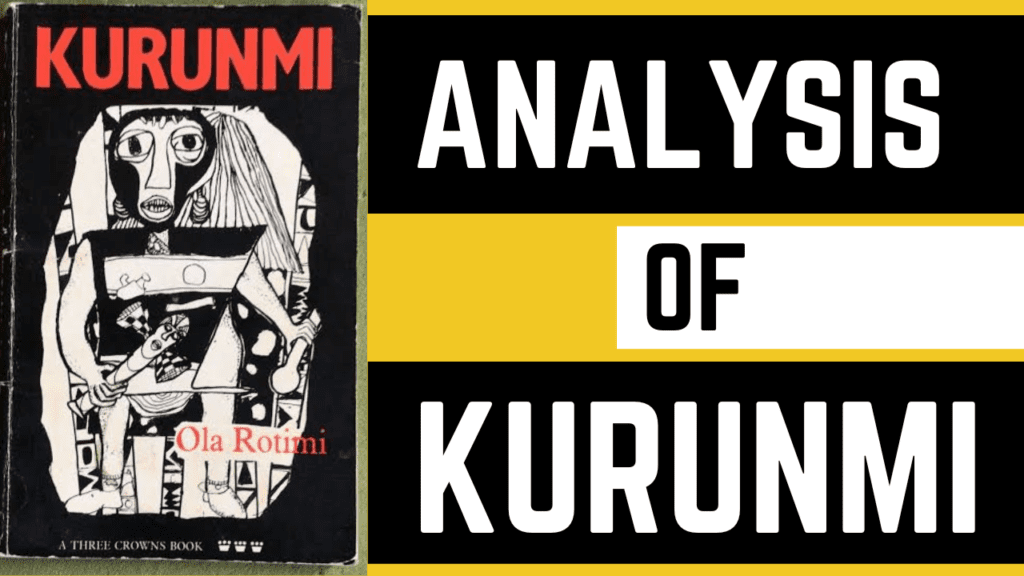
Kurunmi: An Historical Tragedy (1971) by Ola Rotimi is about the 1858 war between the Yoruba communities of Ijaiye and Ibadan. The play is part of a trilogy by Ola Rotimi, which includes The Gods are Not to Blame (1971) and Ovonramwen Nogbaisi (1974). The play projects the conflict over succession and tradition in the nineteenth-century Yoruba Kingdom of Oyo and how it culminated in a destructive internecine war.
It is 1858, and the Alaafin of Oyo depended on two Yoruba towns for military defence: Ibadan and Ijaiye. The ruler of Ibadan, Oluyole, was given the title Bashorun or Prime Minister of Oyo, while the ruler of Ijaiye, Kurunmi, was named Are Ona Kakanfo or Generalissimo of Oyo.
The reigning monarch of Oyo at the time, Alaafin Atiba, sensing that he is going to die soon, calls a meeting of his powerful regional chiefs to get them to agree to his proposition that Prince Adelu, the crown prince, becomes his successor after his demise. This move contravenes the stipulation of the Oyo constitution that the Aremo or crown prince, who enjoys great power while his father (the king) rules, must commit ritual suicide upon the demise of the Alaafin.
Ibadan supports Alaafin Atiba’s move, while Ijaiye, under Kurunmi, opposes Alaafin’s decision. Kurunmi, in particular, fumes at the flagrant abuse of power and the disregard for tradition. The stands of both towns reflect the rivalry between the two mainstays of nineteenth-century Oyo.
When Alaafin Atiba joins his ancestors, Kurunmi refuses to acknowledge the legitimacy of the newly installed Alaafin Adelu. His refusal keeps him at loggerheads with not only Alaafin Adelu but also with the Ibadan war chiefs.
Kurunmi: An Historical Tragedy thus tells the story of the conflict that arises between them as a result of their decisions, with the Egba coming in on the side of Ijaiye to fish in the troubled waters of the politics of its former master, Oyo. The Egba warriors would later withdraw from the war to take care of a pestering territorial threat from Dahomey warriors, leaving Kurunmi to take care of his problems while they took care of theirs too.
By the end of the play, Ibadan triumphs over Ijaiye; change over tradition. Ijaiye falls. And Kurunmi meets a tragic end. His refusal to adapt or compromise gives Ibadan the pretext to snuff out Ijaiye’s opposition and effectively assert its dominance in Oyo Kingdom.
Act to Act Summary

Kurunmi: An Historical Tragedy is a four-act historical tragedy. The first act is titled “Termites Dwell Underground” and has three scenes. The second act, “The Hawk and the Black Crow,” has two scenes. The third act, “What the Stomach Desires to Eat,” has nine scenes. And the fourth act, “The Soft Touch of Dew,” has five scenes. Elsewhere, I have made posts about the summary of each act. You may want to check them out:
- Act One Summary of Ola Rotimi’s “Kurunmi”
- Act Two Summary of Ola Rotimi’s “Kurunmi”
- Act Three Summary of Ola Rotimi’s “Kurunmi”
- Act Four Summary of Ola Rotimi’s “Kurunmi”
You can also check out our post on the characterization in the text.
Setting of Ola Rotimi’s “Kurunmi”
Ola Rotimi’s Kurunmi takes place in the context of the 19th-century Yoruba kingdom, specifically during the turbulent period preceding the British colonisation of Nigeria. The physical setting of the play is Ijaiye, a town within the Oyo Empire.
Themes in Ola Rotimi’s “Kurunmi”
Ola Rotimi’s Kurunmi is replete with a lot of themes, and we can all agree that the major theme of the play is the conflict between tradition and change (I eschew the word “modernity,” because tradition does not necessarily have to be antithetical to modernity). Other themes in the play include the destructive nature of war, personal vendetta, cultural pride, and accountable leadership.
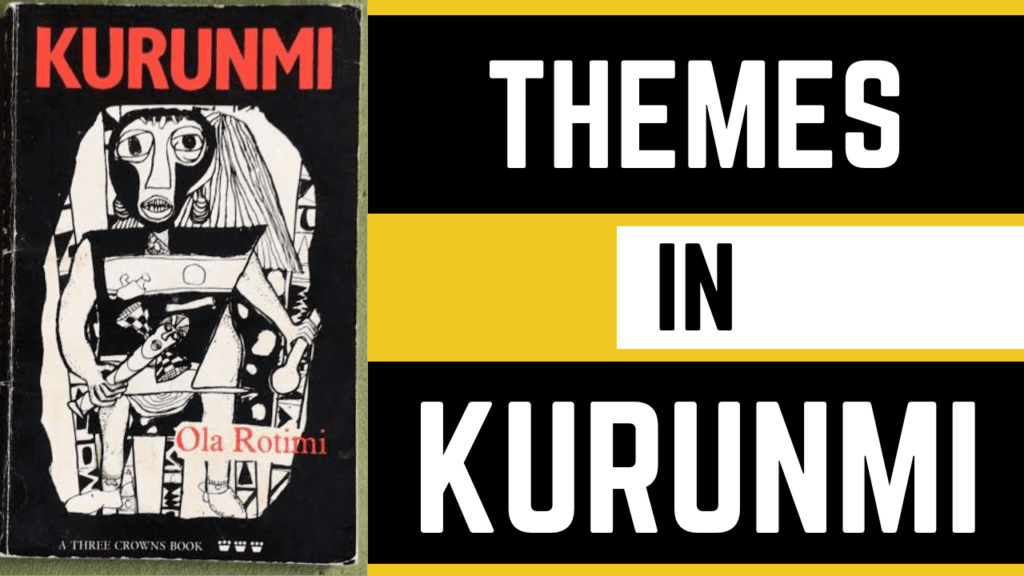
Ola Rotimi extensively projects the theme of tradition versus change as the overreaching theme in the play. In fact, it is the very pretext for the Ibadan-Ijaiye war. The Ibadan war chiefs and other powerful regional chiefs, like the Timi of Ede, all support the change in tradition that the Alaafin Atiba orchestrates. However, Kurunmi stands on the side of tradition. The import of this is that when Prince Adelu ascends the throne of the Alaafin, Kurunmi automatically refuses to acknowledge the legitimacy of his rule. This pits Adelu against Kurunmi, who, despite his powers and dominance, still remains a subordinate of any Alaafin on the throne.
Another important theme in Kurunmi is the destructive nature of war. We witness how destructive a war can be, as evident from the casualties incurred on both sides. We can draw this much from the account of Reverend Mann and his wife as they chronicle the progress, or perhaps, the deterioration, of the war. The couple also set up an infirmary for wounded soldiers, and the kind of patronage it enjoys speaks volumes about the human destruction incurred in the war.
Besides, the economic activities of the Ijaiye people are truncated by the war, and their food supplies are cut off. To cap it all, Kurunmi loses his five sons to the war. He also commits suicide by the end of the play, in the fashion of Yoruba warrior chiefs who have suffered heavy defeats. And Ijaiye is destroyed too.
Kurunmi also explores the theme of personal vendetta. While the war may come off as an ideological war inspired by the rivalry between Ibadan and Ijaiye, there is, however, a tincture of personal vendetta in the war. In Balogun Ogunmola, we see a ruthless, short-tempered man who is hell-bent on avenging his humiliation by Kurunmi. His hatred for Kurunmi predates the war. And throughout the pre-war deliberations, he neither tolerates nor sees eye to eye with any Ibadan war chief who advises against a war. To Ogunmola, such a chief is a coward. The war is the only way he can assuage his bruised ego. And he does get his revenge, as he was very instrumental in the deaths of Kurunmi’s five sons and the destruction of Ijaiye. Ogunmola’s dislike for Kurunmi extends to the people of Ijaiye; hence, the Yoruba saying:
Akíni ńje akíni; afinihàn ńje afinihàn; èwo ni ‘‘Ọ kú, ará Ìjàyè!’’ lójúde Ògúnmolá?
Source: Yoruba Proverbs by Oyekan Owomoyela.
Translation:
A person who will greet one should greet one, and a person who will betray one should do so; what is the meaning of ‘‘Hello, Ìjàyè person!’’ before Ògúnmolá’s house?
Another deep-seated theme in Ola Rotimi’s eponymous play is the theme of cultural pride. If there is anything the eponymous character takes pride in, it is the culture of his people. He is unapologetically proud of the ways of his forebears. We see this much in his encounter with Reverend Mann, who is complaining about the fact that Ijaiye people are not converting to Christianity. Without mincing words, Kurunmi challenges Mann on why Ijaiye people should leave the ways of their forebears in embrace of the ways of the white men. For once, Kurunmi asks Mann to put himself in the shoes of the Ijaiye people. Would Mann abandon the ways of his forebears for the culture of a foreigner’s forebears? Kurunmi sees other Yoruba people leaving the ways of their forebears for another’s as traitors. His downfall can be attributed to this unyielding pride and refusal to adapt to changing circumstances; he miscalculates the political realities around him. From the perspectives of Timi and Oluyole, Kurunmi clings to outdated traditions.
One last theme we shall examine in this section is the theme of accountable leadership. For a leader, Kurunmi is quite authoritarian, owing to the kind of power he exerts, but that does not mean he doesn’t take corrections from his subjects. He is a tough man to handle, but when his subordinates request that he carry them along and be accountable to them, he does comply with their demands. By the end of the play, he also takes the blame for the woes of his people. Only an accountable leader can do that. He could have conveniently blamed the woes of his people on Ibadan warriors who had chosen to flow with the tide of change, but he did not.
Dramatic Devices in “Kurunmi”
We are going to examine the dramatic devices in Ola Rotimi’s Kurunmi. The playwright heavily employs Yoruba proverbs and idioms to portray the worldviews of the characters. Here is an instance of such usage:
When the gaboon viper dies, its children take up its habits, poison and all. The plantain dies, its saplings take its place, broad leaves and all. The fire dies, its ashes bear its memory with a shroud of white fluff.
– Kurunmi (p. 15, Kurunmi: An Historical Tragedy)
We have a couple of these proverbs and idioms compiled in a different post, Memorable Quotes from Ola Rotimi’s “Kurunmi.”
There are also chants in the play, as with the panegyric of Kurunmi chanted by Asunrara at the beginning of the play. Ritual is another prominent feature of the play. This is evident in Kurunmi’s self-assigned duty of worshipping the deities and the Egungun cult attack on Reverend Mann and his adherents. Same with musical interludes. Drumming and music punctuate the action in the play. These contribute immensely to the dramatic moments in the play in that they signify celebration, tension, and the pronouncement of fate. There is drumming at the feast in the beginning. There is also a dirge accompanied by a wailing flute at the end of the play, which announces the demise of Kurunmi.
The use of “Crowd” as a chorus in the opening scene of the play particularly emphasises communal participation in the play. The crowd hails Balogun Ogunkoroju and later Kurunmi, as it is wont in Yoruba culture, as each of them enters the stage. Besides, there is turn-taking in the conversation between Balogun Ogunkoroju and the crowd.
Lastly, it cannot be denied that Kurunmi’s hamartia, or tragic flaw, is his unwavering adherence to tradition. He goes head-to-head with his contemporaries, who favoured change over cultural preservation.
 WHATSAPP: Click HERE to join the new Literature PADI WhatsApp group to receive latest updates on your phone and for further literary discussions!
WHATSAPP: Click HERE to join the new Literature PADI WhatsApp group to receive latest updates on your phone and for further literary discussions!



